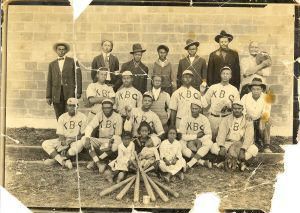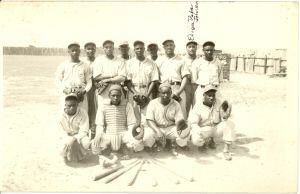Local Teams and Industrial League Teams
Local town teams, semipro teams and sandlot teams provided the foundation of black baseball by developing young ball players and provided older ball players an opportunity to continue playing once their “league” careers had ended. These teams helped keep black baseball thriving across the country. During baseball’s heyday from the 1910’s through the 1940’s virtually every town in America had a ball club. The large cities would have many baseball clubs representing neighborhoods, social clubs, churches, businesses and other groups. In Rob Ruck’s book Sandlot Seasons: Sport in Black Pittsburgh, he identified that in the late 1920’s there were approximately 400 black baseball clubs in 50 leagues in the greater Pittsburgh area. During these years there was very little media coverage of Negro League baseball. These local teams were black baseball to most of America. Local ball games were the number one source of entertainment in most black communities around the country.

KBC Baseball Team (c. 1910's)
Industrial league teams offered many ball players the opportunity for a good steady job in one of the plants or factories, the option of being able to stay home close to family and the chance to play good competitive baseball all at the same time. The Birmingham Industrial League in Birmingham, Alabama was the top industrial league in the United States. It has been said that the top teams from the Birmingham Industrial League could hold their own against any level of competition. Negro League players like Artie Wilson, Piper Davis, Bob Boyd, William Greason, Lyman Bostock and Willie Mays got their start in the Birmingham Industrial League.

Pittsburg Panthers (Texas) (c. 1940's)
Local teams and industrial league teams also afforded players who didn’t want to travel the opportunity to play competitive baseball on a regular basis.
Center for Negro League Baseball Research
1409 Carroll
Carrollton, Texas 75006
All Rights Reserved Center for Negro League Baseball Research
